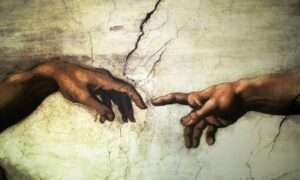Buddhism is one of the main world religions inspired by a very ancient tradition and by the teachings of Gautama the Buddha, and around 400 million followers in the world . It is mainly practiced in Sri Lanka, Thailand, Cambodia, Laos, Burma, Bhutan and Mongolia, China and Tibet. It is the state religion in Cambodia and Bhutan.
Buddhism is a series of practices, disciplines, writings on personal and spiritual growth, an oral tradition handed down and filtered by different oriental cultures over the millennia, with a great variety of ramifications. These teachings are brought together in scriptures called Canons: the main ones are the Pali Canon, the Chinese Canon and the Tibetan Canon.
In addition to being a religion, it is also considered an existential philosophy that inspires a non-materialistic lifestyle, aimed at compassion, altruism and meditation. There are different types of Buddhism, each one born of the culture of the country in which it developed.
Buddhism is not focused on belief in a God but focuses on certain disciplines that allow transcendence to the higher worlds. The main goal of Buddhism is enlightenment attainable by any human being. Meditation is the main tool through which to become acquainted with the external and internal world and reach the center of oneself and one’s inner balance. Through meditation we can get rid of our ego and develop love and compassion towards others and our happiness. The Dharma according to Buddhism is the way to enlightenment.
Who is the Founder of Buddhism

Buddhism was born in India, in the sixth century BC. and was created by Gautama the Buddha. The life of the Buddha has no concrete historical evidence and has remained shrouded in mystery. The discovery of some archaeological finds has led to suppose that he was born in southern Nepal, in Lumbini, around the year 565 BC.
In some versions of the Buddhist Canons we find information about his life. The Buddha’s birth was preceded by miracles and premonitions: during many incarnations his spirit had reached great awareness and was ready for enlightenment. Before he was nicknamed the Buddha, his name was Siddhartha Gautama and he was a wealthy prince, the son of an important king of northern India and a queen of great beauty. The woman gives birth to the Buddha in a forest following a dream in which a white elephant penetrated her without any pain. As soon as little Buddha was born he said:
“To attain enlightenment I was born, for the sake of sentient beings; this is my last existence in the world”
During the celebrations for the new birth an old sage named Asita made the horoscope to the new born and burst into tears. He said that the child’s destiny was to become a universal monarch or a sage destined to show the world the way to enlightenment. His were tears of joy and sorrow at the same time. Joy that such an extraordinary being was born. Sorry that, being already old, he could not have witnessed the Buddha’s realization that they would change the world.
The mother died 7 days after giving birth. The father, in the following years, was very worried that the prophecy of the old Asita would come true: he was a warrior king and wanted his son to become a warrior like him. Siddhartha, knowing nothing of what existed outside his royal abode, ventured out to explore the world, and saw an old beggar and a corpse. He knew old age and death and was so disturbed by it that he reflected for a long time on the meaning of human life. So he decided at the age of 29 to leave his family and his wealth to travel and live in absolute poverty like an ascetic. He left his home at night with his white horse, while everyone slept.
He stayed with several ascetics such as Āḷāra Kālāma who taught him to explore his unconscious and the practice of meditation, the truth of nothingness through which it is possible to achieve liberation. After many experiences he understood that the material plane had a certain importance and it was not possible to reach a state of enlightenment with continuous problems of hunger and suffering of the body. His enlightenment took place in the village of Bodhgaya, in today’s state of Bihar, after a long period of meditation under a tree, the so-called bodhi tree.
Traveling and stopping to study with different masters Gautama learned from them the practice of fasting and self-maceration of the body, but he continued to be dissatisfied with the results. Eventually he realized that with his body in poor condition it was not possible to achieve enlightenment, and he returned to a normal diet, causing the estrangement of the ascetics he frequented.
Gautama the Buddha

At age 35, 530 BC On a full moon night in May, under a fig tree near Bodh Gaya, Gautama meditated all night and became enlightened as he reached Nirvana. For the next few weeks he meditated under several trees, pondering whether he should spread his understanding to the world.
An understanding that was impossible to grasp with the mind, which goes beyond all rationality and can only be experienced. The tale has it that Brahma The Lord of the World came to plead with him to spread his understanding so that as many men as possible could experience the Dharma. Thus the Buddha began to spread his teachings on Nirvana in India.
After enlightenment the Buddha gave the Benares discourse, a sermon that illustrates the middle way and from which Buddhism takes its fundamental basis. The middle way is to avoid all kinds of excesses in your life and achieve the right balance.
Typical Doctrines of Buddhism

The basis of Buddhism is the oral transmission of tradition: there is no real sacred text of Buddhism, but a series of teachings written in ancient languages such as Sanskrit. The fundamental teachings of the Buddha are the four noble truths and the noble eightfold path. Some fundamental points are:
The truth of the origin of suffering: suffering is created in the desire for material pleasures or in attachment to the physical plane. All links with the material world can cause suffering if we do not take due detachment from them. The Buddha says: “union with what one does not love is pain, separation from what one loves is pain, not getting what one wants is pain”
The truth of impermanence: everything in the physical world is mental is subject to decay and a birth and an end. The truth of the end of suffering: suffering dissolves with the absence of desire. The truth of emptiness: objects have no consistency of their own but are energy with a bond of interdependence.
In this way it is possible to reach enlightenment, Nirvana, which can be obtained with discipline and constant training, through the progressive detachment from the material plane.
The Buddha does not deny the existence of deities from previous traditions such as the Vedic one. Indeed, it strongly states that the Vedas exist, but Buddhism’s focus is not focused on the worship of a God. According to Buddhism, deities can do nothing to save humans from Samsara, the cycle of death and rebirth. and bring them to enlightenment.
Buddhism supports the law of Karma, the principle of cause and effect. The meaning of Karma is action. Each action causes a cause and an effect that will affect our lives over the years or in subsequent reincarnations. The positive or negative quality of the actions therefore affects our future life, resulting in happiness or unhappiness.
If we follow the right path made up of positive actions we can get closer and closer to enlightenment until we reach it, otherwise we fall lower and lower on the level of unawareness. Our problems with our suffering according to Buddhism depend exclusively on ourselves and not on external causes.
Zen Buddhism

Zen Buddhism refers to a set of Japanese, Korean and Vietnamese Buddhist schools founded by the Indian monk Bodhidharma. the term Zen in Sanskrit means vision. In the teachings of the Buddha, vision is the progressive awareness that comes from higher states of consciousness and the understanding that is obtained from samadhi, i.e. the concentration that is achieved through meditation and stillness. From Zen the termwas created in Japanese schools zazen, which indicates the typical posture in which one sits during meditation. Zen Buddhism first spread to the Japanese islands and later to Japan by means of some Chinese monks who traveled to that territory.
Zen Buddhism spread to the West around 1890 in the city of Chicago, thanks to the Russells and Christian circles who promoted their Buddhist practices. Later in New York, in 1931, thewas created Buddhist Society of America. Also in San Francisco and Los Angeles various Zen meditation groups for young Americans spread by oriental masters. Only at the end of the sixties, however, did the first Western Zen masters appear in the city of San Francisco and Hawaii. At the end of the 1960s it also spread to Europe, in Paris, thanks to the monk Taisen Deshimaru, who gathered around him many European disciples of Zen Buddhism.
Zen Buddhism differs from Buddhism because it refuses to give authority to traditional Buddhist scriptures. It recognizes their importance, as in the case of the, for example Lotus Sutra, but as the only foundation it points to the direct experience of the Satori. Satori is the understanding of reality, looking and coming to understand one’s own nature, the vision of the heart of things and the awareness that reality, the cosmos, ourselves and all things are part of a whole that finds its form in the concept of emptiness. Satori is distinguished from Nirvana: while the latter is a definitive detachment from the material world, Satori promotes an active and conscious participation in the world, if perceived in its dimension of emptiness.
The concept of emptiness was explained in the West through quantum physics thanks to the Italian physicist Carlo Rovelli. The theory states that reality originates from a quantum vacuum composed of interdependent particles in a unique intertwining. The same concept that the Buddha affirmed when he said that everything has no life of its own but all things exist in relation to the whole.
3 Must-See Documentaries on Buddhism
Talking with Buddha

What is Tibetan Buddhism? A documentary that takes you on a journey between Tibetan Buddhist monasteries to meet some of the great masters of Buddhism, against the backdrop of the Himalayan mountains and hypnotic chanting of mantras. A film to transform negative energy into positive. For most lay people, Tibetan Buddhism is a mysterious faith, yet it is more a science than a religion, and it opens the door to happiness and peace through which all can enter.
Zen Mind

The Zen Mind is a fascinating journey through Japan to explore Zen in its natural habitat. From the hustle and bustle of rush hour Tokyo to the peaceful mountains of Kyoto. From hidden Zen centers to city skyscrapers to zendo in a remote monastery, in an inaccessible and unknown world. It is a world where material wealth is exchanged for spiritual wealth. A travelogue to explore the practice of modern Zen.
In the Footsteps of Buddha

In the footsteps of the Buddha is a journey through India that retraces the same path that Gautama the Buddha took to reach enlightenment. Siddhartha Guatama lived 2500 years ago in an ancient land called Magadha, known today as Bihar, the poorest state in India. He was born in Lumbini (now Nepal) in a noble family. At the age of twenty-nine he gave up all wealth and, like a homeless wanderer, set out in search of the nature of our existence. To seek the truth. For six years he wandered like a homeless Shramana, like a spiritual seeker.






